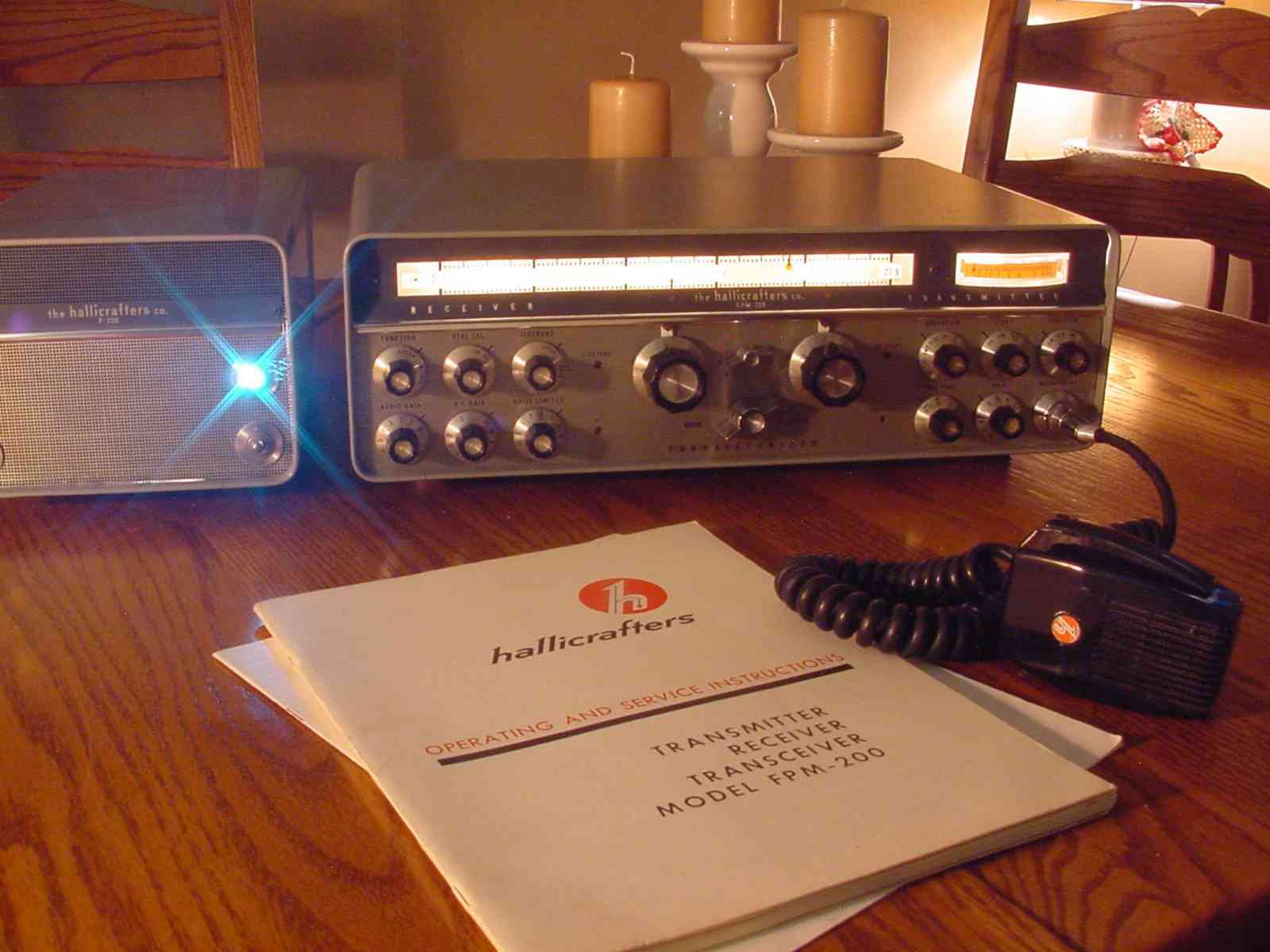Transceiver


|
I have the great pleasure of working with Dick Schnell K9HPD in connection
with research I am doing on his father Fred (F.H.) Schnell. While performing my research, I came across a letter written in the 1960's where F.H. was talking about his enjoyment running his Hallicrafters FPM-200 mobile down in Florida. F.H. retired to Florida in 1957. F.H. and Bill Halligan were good friends and this letter even mentions how well Bill was doing with his FPM-200 mobile. When I told Dick Schnell how I passed up a nice FPM-200 many years back at a swapfest and how disappointed I was that I never had the opportunity to experience using such a fine and rare radio. Well low and behold Dick tells me he still had his fathers FPM-200. Not only was it still in good physical condition, he still had all the original shipping boxes! After a bit of back and forth chatting I offered to give the FPM-200 a once over in my lab and see if it could be again brought back to full functionality. Dick was kind enough to intrust me with the rig and after about a year I finally got around to completing my work. Dick was very patent in understanding that not only do I have my 9-5 job and on top of the normal family duties it doesn't provide all the time to spend playing with radios. For those of you who don't recognize the name Fred Schnell and his numerous contributions to the early years of ham radio let me take this opportunity to presented a brief history timeline: - Born November 22, 1892 in Chicago, IL. F.H began experimenting with Spark radio in 1908 and had built a 2KW spark transmitter by 1911. Holding the calls 9AOG and 9AH after the radio conference of 1912. - Copied the first transmission of the WWI Armistice message from Nauen, Germany on November 10th, 1918 while with USNR stationed at Belmar New Jersey. - One of few selected radiomen aboard the U.S.S. George Washington that carried President Wilson to France for the peace talks at the end of WWI. - In 1920 became only the third paid employee of The American Radio Leaque (ARRL) as Traffic Manager. - Achieved the first two-way amateur communications across the Atlantic. As 1MO he made contact with 8AB in France at the end of November 1923. - In 1925 he took a leave from the ARRL to travel aboard the U.S.S. Seattle from the US West coast to Australia and back. The objective was to prove the capabilities of HF communications. On frequencies near our existing 80, 40 and 20M bands, using the special callsign NRRL, he was able to provide consistant communication between any point on the journey and the U.S.A. - Leaving the ARRL shortly after the NRRL trip F.H. returned to the Midwest and over the remainder of his life held positions at Burgess Battery, Aero, The Radio and Television Institute, General Household Utilities, the Chicago Police Department and Motorola. He remained active in the USNR until after WWII and continued to administrate important communications related projects through out that time. During this period he held the callsign W9UZ and continued to contribute technical articles in the ARRL periodical QST amoung many other radio magazines. - Retired to Florida in 1957, but remained very active in ham radio holding the callsign W4CF. Passed away April 11, 1975. From all indications the FPM-200 described in these pages hasn't been operational since the late 60's. However, if you read on you'll see I really didn't need to perform any serious work to get it back to full functionality. |